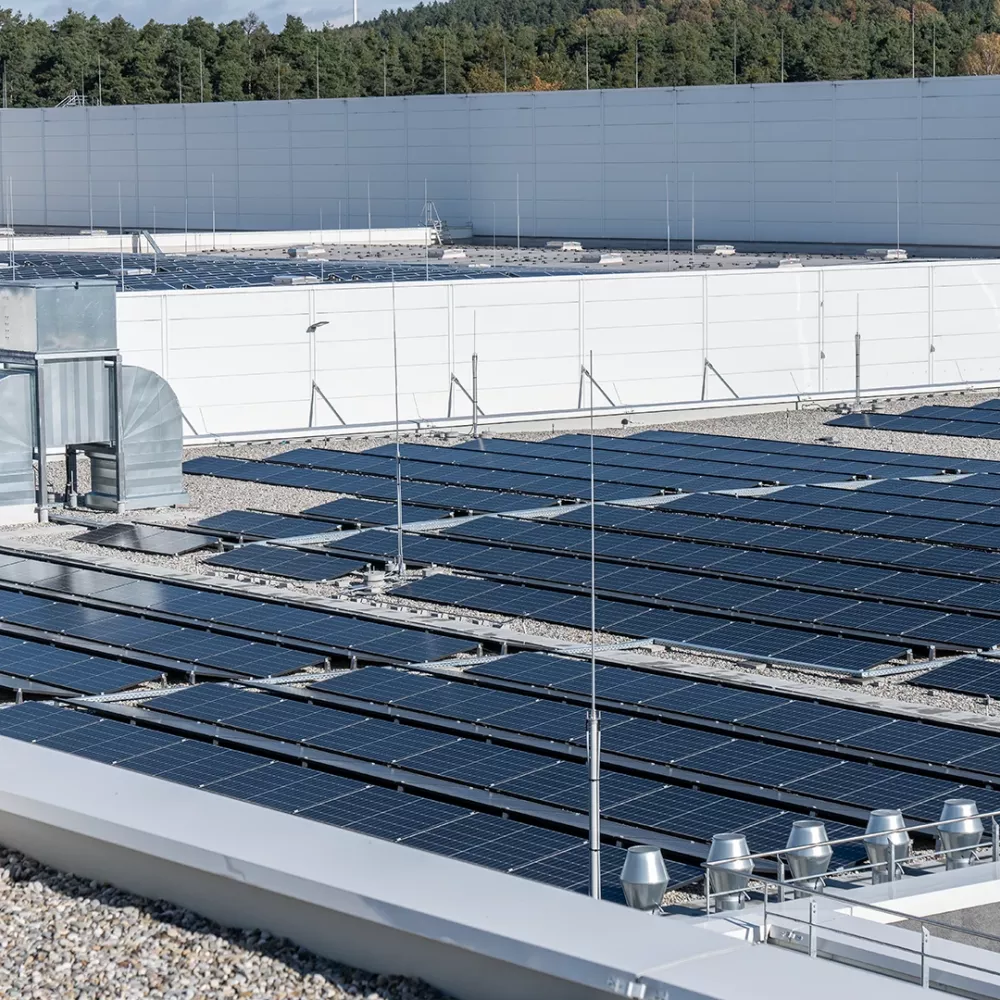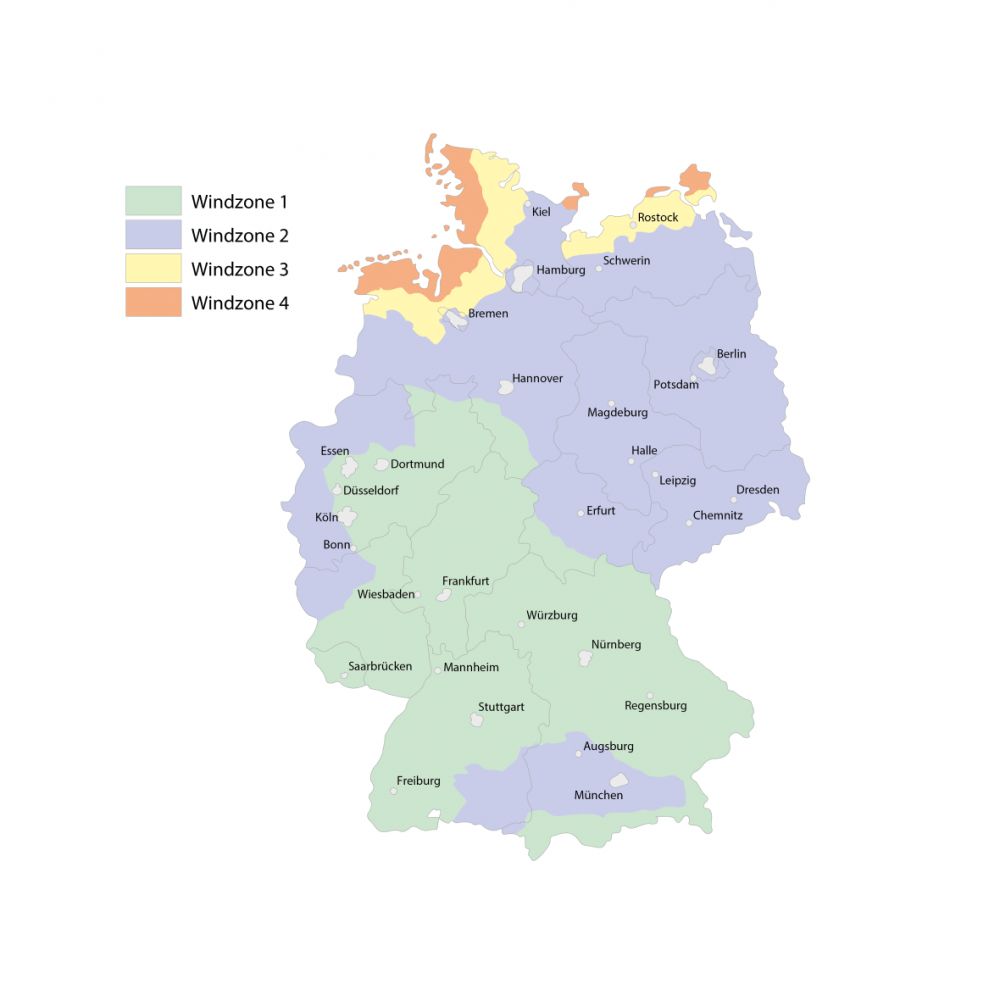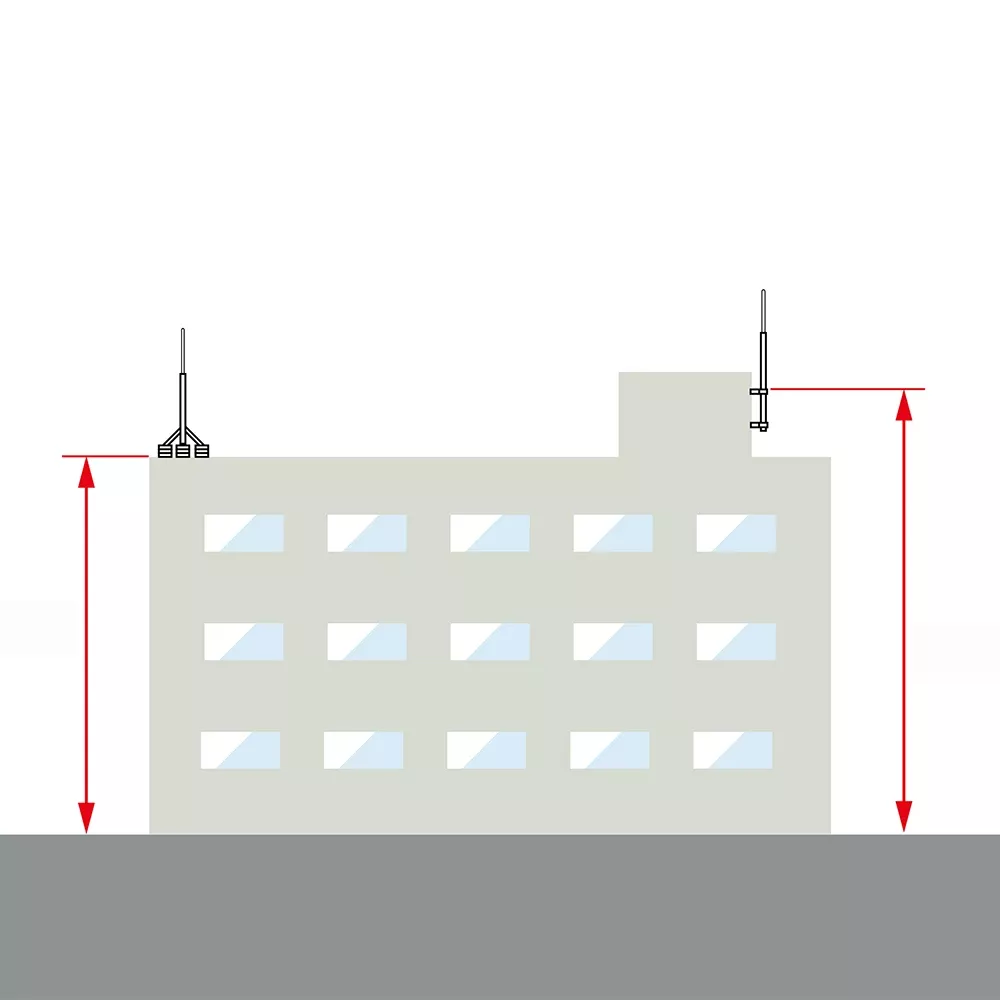Calculating wind load
The wind load calculation is an essential step in the planning and installation of a lightning protection system. It ensures that the planned system can withstand the effects of the wind and functions perfectly.

Calculate the wind load in
5 steps
The first step is to determine the wind zone. The building category is then determined. Further steps are the determination of the object height and of the gust wind speed. Individual technical parameters are also taken into account in order to include specific properties of the structure in the wind load calculation.

Step 1: Determine
wind load
Wind zone as basic parameter
The wind zone depends on the location of the project and the country-specific requirements. For example, Germany is divided into four wind zones with different basic wind speeds.
The basic wind speeds are divided as follows:
Wind zone 1: 22.5 m/s
Wind zone 2: 25.0 m/s
Wind zone 3: 27.5 m/s
Wind zone 4: 30.0 m/s
Step 2: Determining
the terrain type
Terrain-specific loads also influence the wind load. Determine in which of the following terrain types the object is located.
Terrain type I:
Open sea; lakes with at least 5 km open area in wind direction; smooth, flat land without obstacles
Terrain type II:
Terrain with hedges, individual farmsteads, houses or trees, e.g. agricultural area
Terrain type III:
Suburbs, industrial or commercial areas, forests
Terrain type IV:
Urban areas in which at least 15% of the area is built up with buildings whose average height is >15 m

Step 3: Determining
the object's height above the ground
The height specification includes the height above ground level. The height point to be determined (height above ground) depends on the type of installation of the air-termination system.
- For free-standing air-termination systems or stands (left): Height above ground level = stand erection level
- For air-termination systems using fixings to walls or objects (right): Height above ground = highest clamping point on the object
Step 4: Determining
the gust wind speed
You must adhere to country-specific requirements for determining the gust wind speed.
Step 5: Considering
individual technical parameters
In a final step, the determined gust wind speed is compared with the specifications of the planned lightning protection components. The respective product-specific installation instructions and wind load specifications can be found in our online catalogue for lightning protection:
Our services
We can provide support for your project from the planning to the implementation and beyond. Take advantage of our wide range of practical tools and services.
With DEHNplan, you can easily plan standard-compliant external lightning protection for your project. The BIM-enabled software facilitates your planning with a visual representation of the protected volume and separation distances.
We will be happy to calculate the wind load for you free of charge!
Simply fill out our enquiry form with all the relevant information and send it back to technik.support@dehn.de.
Downloads
Wind load calculation request
Isolated and insulated lightning protection
Correct design and dimensioning
